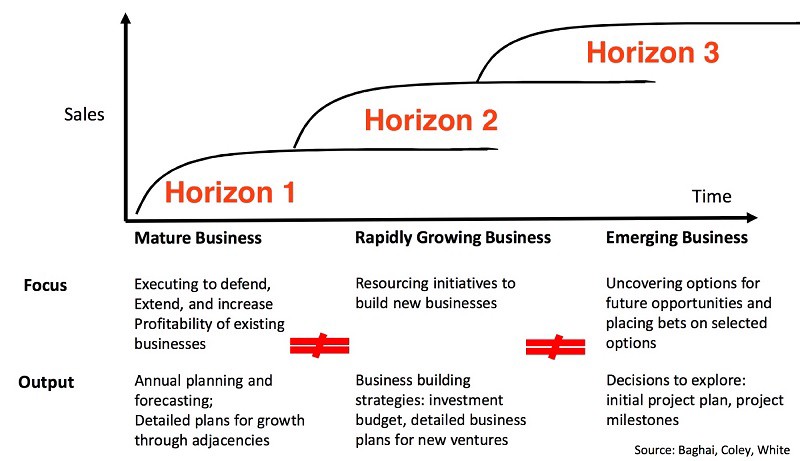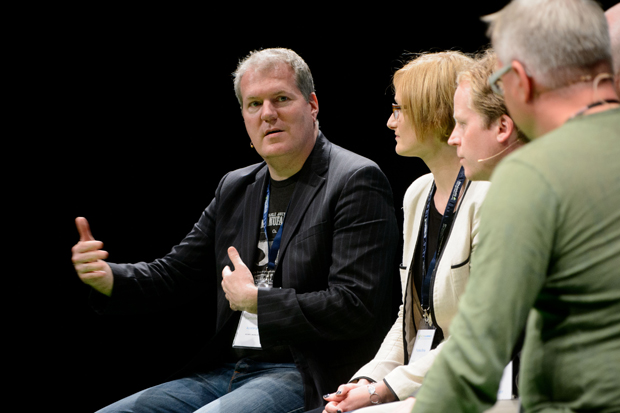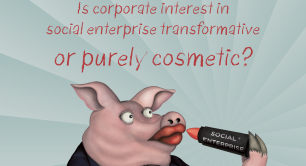CEOs love innovation – but they’re missing the opportunity to use it for more social impact
As a ‘decade of action’ on the Sustainable Development Goals unfolds, corporations are under increasing pressure to do their bit – but few are making impact goals core to their business. Large firms tend to dedicate their CSR departments to tracking and measuring, while their innovation teams focus on growth and revenue. If they don’t start applying tools of entrepreneurship and innovation to connect the two, writes Rainmaking Innovation’s Alex Farcet, business leaders will miss a massive opportunity.
I recently attended an institutional investor conference. In that room – worth $12tn of assets under management – there were a lot of topics of debate. Yet one subject matter required no further argument: five years ago it was enough for institutional investors to do no harm by divesting. Today, it’s no longer enough to be passive.
Pressure from above and below
The pressure from the ‘top’ is real. Investees holding large stock positions, and board seats in global corporations, are increasingly demanding these asset managers to take action. They have to do good to fuel new solutions, as made eminently clear by BlackRock’s Larry Fink.
Outside the board rooms, consumers are driving the impact movement and they are fierce. CEOs are being questioned about the impact their companies have on society.
As individuals, we have the power to challenge prevailing and unsustainable practices, and shift attention towards new ways of working. Take, for example, the incredible fast-growing vegan movement. The number of US consumers identifying as vegan grew from 1% to 6% between 2014 and 2017, a 600% increase, according to GlobalData. For those nimble enough to grow and adapt, it opened new opportunities for growth.
Time to rethink how we do business
We at Rainmaking often operate at the intersection of corporates and startups. We’ve seen growing demand for more complex innovative solutions from our customers and partners. Most CEOs and their innovation teams have moved from the early days of copy-cat accelerators and have begun investing in a portfolio of innovations to stay ahead of the curve.
Below: McKinsey’s ‘Horizons’ framework provides a useful grouping of innovation initiatives. The emerging consensus is to balance innovation portfolios between H1 70% (core), H2 20% (incremental), H3 10% (disruptive). Source: steveblank.com.

In more mature industries and startup ecosystems, accelerators have evolved from essentially full-time, pre-seed mentorship programmes designed to help first-time founders. Now, they are semi-remote, pilot-focused programmes for scale-ups which are ready to work with large companies, such as in the IKEA Bootcamp.
At the most cutting-edge (also known as ‘bleeding edge’) levels of innovation, we partner with large corporations to de-risk the process of creating new non-core business models that have the potential to contribute significantly to group profits within five to seven years.
Our partners create hybrid venture models, where they co-own a startup along with its founders, and where they give founders access to a unique hard-to-replicate asset to help them grow.

Above: Alex Farcet, Rainmaking co-founder.
What's wrong with CSR?
The sad truth is, this sophistication on innovation has yet to be applied to the social impact space. Legacy corporate social responsibility (CSR) and sustainability teams are in many cases focused on risk management and reporting and rarely have the resources and manpower to actually innovate.
Sustainability teams are in many cases focused on risk management and reporting and rarely have the resources and manpower to actually innovate
Michael Porter and Mark Kramer (rather harshly) summarised the situation in 2006 as ‘a hodgepodge of uncoordinated CSR and philanthropic activities disconnected from the company’s strategy that neither make any meaningful social impact nor strengthen the firm’s long-term competitiveness’.
An informal Rainmaking study in 2019 of the largest 200 global companies found that 80% mention CSR and what we call ‘business as usual innovation’ (which aims to impact the traditional P&L), while fewer than 20% are driving impact innovation initiatives. In other words, most companies have CSR departments for tracking and measuring, and innovation programmes to grow revenue or cut costs – none of which moves the impact needle. That is a massive opportunity to drive impact.
Among that 20%, we found four key drivers of impact innovation:
- Internal champion - “The impact innovation agenda is dependent on me.” Those of us who have worked in large organisations know about the lone internal champion who battles the bureaucracy and overcomes political resistance to drive change. Limitation: Heroes are hard to reproduce and scale.
- Market pull - “Our customers and employees demand change.” Bottom-up consumer pressure has impacted some industries such as fashion and consumer electronics, while many millennial employees are demanding to work on meaningful and impactful projects, or walking out. Limitation: We can’t expect consumers to drive change in industries where day-to-day visibility is poor (e.g. water management); even in more visible industries some businesses are still lagging behind.
- Regulations - “We must comply with regulation.” In some industries, such as oil & energy and transportation, businesses have no choice if they want to continue to operate. Regulators have stepped in with targets such as the International Maritime Organisation’s target to cut the shipping sector's overall CO2 output by 50% by 2050. Limitation: We can’t regulate our way to solving the SDG challenge, that is too reactive and too late.
- Integrated - “Impact is part of our company ethos.” Fortunately there are a number of lighthouses which are leading the way by making impact a fundamental part of their core business. In Denmark, where I’m based, we’re lucky to have three in the top 10 companies as per the recently announced ‘Global 100’ most sustainable corporations of 2020 (Ørsted, Chr. Hansen, Novozymes). Those companies are an inspiration and we can hope they will open source their approaches.
How companies can apply the innovation toolbox to impact
1. Focus on specific aspects of impact
The most impactful innovation programmes have a limited scope, focusing on, say, SDG 6 (water). But – from the 600+ global, impact-focused programmes that we’ve counted – most focus on impact broadly. Instead, companies should apply their knowhow to a one or a few SDGs and double down on those.
2. Identify key drivers and benchmark progress against short and long-term goals
We’re convinced most of the innovation ‘toolbox’ directly applies to the impact space. Measuring success, however, will require new metrics (and skill sets) beyond the traditional P&L. Integrating alternative measures of success from day one will be key.
3. Scout for specific impact technologies and startups
As part of a project for The Hague’s Impact City, we scouted for impact startups working on five areas (food & agriculture, water, technology, humanitarian innovation and new energy) – and identified over 5,000. There are tens of thousands of startups in other areas and certainly hundreds innovating on topics relevant to large global organisations. Why not leverage all that innovation by engaging with it through more structured, focused programmes?
4. Focus on the unique needs of impact entrepreneurs
Being a founder is hard in any field. Being an impact founder brings an additional layer of complexity. For-profit investors need to be convinced that this will not impact the rate of return on their investment, while grant givers, philanthropists and other impact investors expect full transparency and commitment towards their core mission. Any programme supporting impact startups must not only recognise but also proactively address the funding challenges they face.
A decade of action
The 2020s have been dubbed the decade of action. It’s no longer good enough to rely on internal champions, to react to consumer pressure, to reactively comply with regulations or to wait for a few leading companies to show the way when it comes to the SDGs.
It’s now time for the majority of large companies to apply the vast number of tools in the innovation toolbox to the impact challenges and opportunities. Innovation, CSR and sustainability teams, as well as other business units, must be given the resources and the mandate to work together to actually innovate to discover new business models, products and services which impact the SDGs. Let’s grab the opportunity, and fulfill the obligation!
Download Rainmaking’s Business of Impact Guide.
Thanks for reading Pioneers Post. As somebody working in the impact economy, you'll know that producing quality work doesn't come free. We rely on paid subscriptions and partnerships to sustain our purpose-led journalism – so if you think it's worth having an independent, specialist media platform to share your news, insight and debate across the globe, please consider subscribing. You'll also be buying social: Pioneers Post is a social enterprise itself, reinvesting all profits to help you do good business, better.




